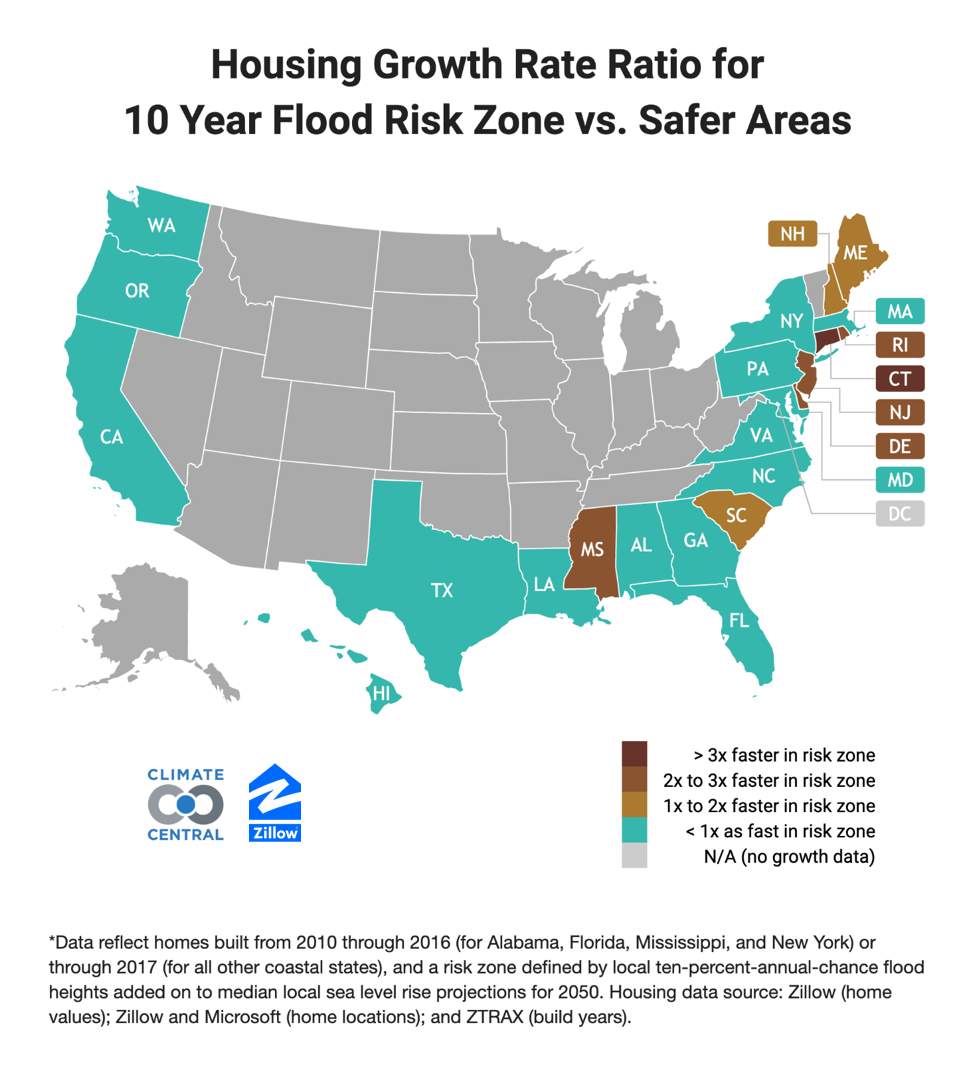As greenhouse gasses go unchecked, more than 800,000 existing homes worth $451 billion are at-risk for a 10-year flood by 2050. By 2100, those numbers will jump to 3.4 million existing homes worth $1.75 trillion.
According to a study from Zillow, about 20,000 homes built in coastal cities are at-risk for chronic flooding by 2050.
"This research suggests that the impact of climate change on the lives and pocketbooks of homeowners is closer than you think. For homebuyers over the next few years, the impact of climate change will be felt within the span of their 30-year mortgage," said Skylar Olsen, Zillow's director of economic research and outreach.
Over the past decade, tidal flooding has risen in many coastal communities. However, since 2009, a third of the nation’s coastal cities have seen an influx of new homes being built.
As water levels rise, sea level rises. There is a 10% annual risk of this type of devastating flood, reaching farther inland than they do now. These floods are capable of washing away cars, causing mold, and washing out beaches, just to name a few potential problems.
Overall, a majority of coastal homes are more at-risk from rising sea levels over the next few decades.
Florida sits at the No. 1 state at risk of chronic flooding by 2100, even though it isn’t in a high-risk zone.
New Jersey is the second state facing the most risk, based on Zillow's results, as it has the most new homes in the 10-year risk zone at 4,524 homes worth an estimated $4.61 billion.
Mississippi and Connecticut also have high risk rates, as both are located in a 3-times faster risk zone.
"Without intervention, hundreds of thousands of coastal homes will experience regular flooding and the damage will cost billions. Given that a home is most people's largest and longest-living asset, it takes only one major flood to wipe out a chunk of that long-growing equity,” Olsen said. "Rebuilding is expensive, so it's doubly tragic that we continue to build brand new units in areas likely to flood."







